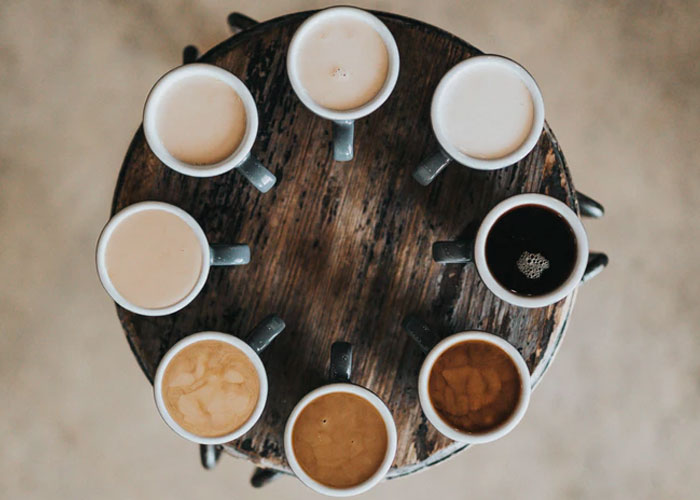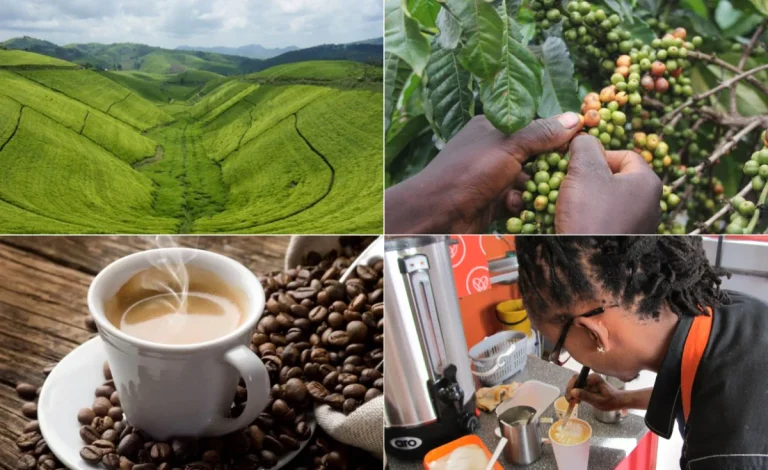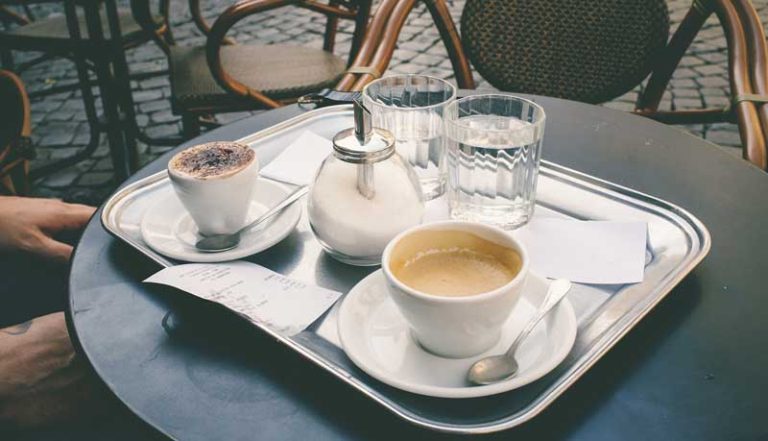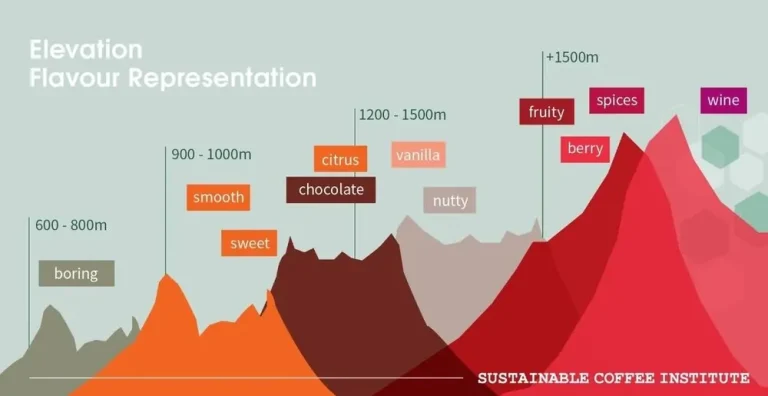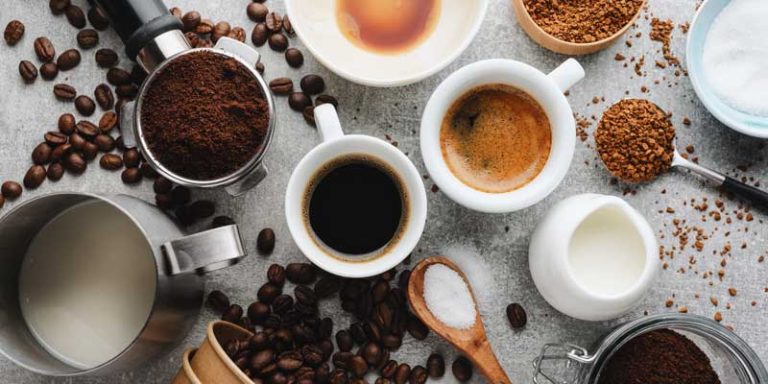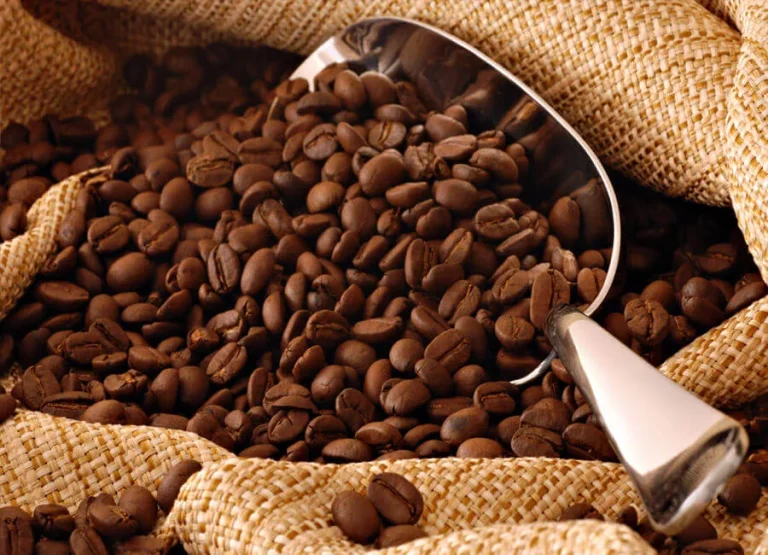Welcome to the world of coffee roasting, where the magic of turning green beans into aromatic, flavorful coffee takes place.
In this article, we will dive into the art and science behind roasting coffee beans, exploring the characteristics and production factors that influence the final taste.
From selecting the right equipment to understanding different roasting techniques for achieving unique flavors, we will guide you through the process step by step.
Join us on this journey to discover the history, evolution, and online resources available for coffee roasters, and start your path to roasting excellence today.
Key Takeaways:
- Understand the science behind coffee roasting to perfect your technique and achieve your desired flavor profile.
- Experiment with different roasting techniques to unlock a diverse range of flavors and characteristics in your coffee beans.
- Utilize online resources, such as courses and communities, to continuously improve your roasting skills and stay up-to-date with the ever-evolving world of coffee roasting.
Introduction to Coffee Roasting
Introduction to Coffee Roasting delves into the intricate process of transforming green coffee beans into aromatic brews through the art and science of roasting.
The journey of a coffee bean from its raw, unroasted state to a fragrant, flavorful brew is a meticulous dance of chemical transformations and sensory experiences. At the heart of the roasting process lies the Maillard reaction, a complex interplay of amino acids, sugars, and heat that creates the distinct flavors and aromas we associate with a perfect cup of coffee. The roaster carefully monitors temperatures, adjusting the airflow and duration to bring out the unique characteristics of each bean variety. It’s a delicate balance of science and intuition, where the roaster’s expertise and sensory perception play a crucial role in crafting the perfect roast.
The Art and Science of Roasting
The Art and Science of Roasting coffee beans is a delicate balance of heat application, timing, and chemistry to achieve desired roast levels and flavor profiles.
During the roasting process, skilled coffee roasters meticulously manage the temperature and duration to trigger chemical transformations within the beans. The heat applied causes various chemical reactions such as Maillard browning, caramelization, and pyrolysis, crucial in developing the beans’ flavor. The timing of the process plays a critical role as extending the roast duration can lead to a second crack, intensifying the flavor but risking bitterness. Understanding how different compounds react to heat enables roasters to craft a spectrum of roast levels, from light to dark, each with distinct taste nuances.
Understanding Coffee Beans
Understanding Coffee Beans involves exploring the characteristics and production factors that influence the quality and flavor of green coffee beans.
Green coffee beans are unroasted seeds of the Coffea plant, typically sourced from regions near the Equator such as Latin America, Africa, and Asia.
These beans come in various varietals like Arabica and Robusta, each with its distinct flavor profile and caffeine content.
The processing methods used, such as dry or wet processing, further impact the beans’ flavors and overall quality.
Factors such as altitude, soil composition, and climate conditions play a crucial role in shaping the unique characteristics of green coffee beans.
Characteristics and Production Factors
Examining the Characteristics and Production Factors of coffee beans involves a deep dive into the world of specialty coffee, sustainability practices, and the importance of continuous learning in the industry.
Specialty coffee, often referred to as ‘third wave coffee’, goes beyond the conventional mass-market beans by emphasizing unique flavors and high-quality production methods.
Sustainable farming practices, such as shade-grown crops, organic fertilizers, and fair trade principles, play a vital role in preserving the environment and supporting coffee-growing communities.
The culture of continuous education in the coffee industry fosters innovation, knowledge-sharing, and improved quality control measures, ensuring that each cup of coffee delivers a distinctive and memorable experience to consumers.
Getting Started with Coffee Roasting
Embarking on your journey with Coffee Roasting involves careful equipment selection and understanding the intricacies of the roasting process to craft exceptional brews.
To kickstart your coffee roasting adventure, the first key item you will need to invest in is a high-quality coffee roaster. There are various types available, including drum roasters, air roasters, and fluid bed roasters, each with its unique roasting style. A reliable coffee grinder is essential to ensure consistent grind size for optimal extraction.
Moving on to the roasting process, it’s crucial to grasp the concept of bean development stages. This includes understanding the crucial stages such as drying, yellowing, first crack, and development time, which greatly influence the flavor profile of your coffee.
Equipment Selection and Roasting Process
Selecting the appropriate Coffee Roasting Equipment and mastering various roasting techniques are crucial steps in achieving consistent and exceptional roast profiles.
Coffee roasters have a plethora of options when it comes to equipment, each affecting the beans in unique ways. From drum roasters that provide even heat distribution to fluid bed roasters known for their high airflow, the choice of roasting machine can greatly impact the final flavor. The technique employed, whether it be air roasting, drum roasting, or direct flame roasting, all play a role in flavor development and roast consistency. Understanding how these tools and methods influence the chemical reactions within the beans is key to refining one’s craft and creating distinctive coffee profiles.
Exploring Roasting Techniques
Exploring Roasting Techniques unveils a world of creativity and precision, where different methods are employed to craft unique flavor profiles in roasted coffee beans.
One of the key aspects when looking into the realm of roasting is the varying roast levels that can be achieved – from light to medium, and dark roasts, each offering distinct characteristics. Lighter roasts are known for preserving the inherent flavors of the beans, while dark roasts bring out rich, bold notes with a deeper aroma. The artistry lies in understanding how time and temperature during the roasting process contribute to the development of these flavor profiles. It requires a keen sense of observation and control to adjust the roast precisely for the desired outcome.
Achieving Different Flavors
Achieving Different Flavors in roasted coffee involves utilizing various roasting methods such as Drum Roasters and Air Roasting to unlock distinct taste profiles.
Drum roasters are known for their ability to provide a slow and steady roast, allowing for a more even development of flavors within the coffee beans. The rotating drum facilitates consistent heat distribution, ensuring that the beans are roasted uniformly, resulting in a balanced flavor profile.
On the other hand, air roasting techniques involve suspending the beans in a stream of hot air, leading to a quicker and more intense roast. This method tends to highlight the beans’ inherent characteristics, preserving their natural flavors and creating a brighter, livelier cup of coffee.
The choice between drum roasting and air roasting ultimately impacts the aroma retention and texture of the roasted beans, with each method offering its unique advantages in flavor development. While drum roasters excel in producing complex, nuanced flavors, air roasting often accentuates the brightness and acidity of the coffee, contributing to a refreshing and vibrant sensory experience.
Roasting Profiles and Methods
Roasting Profiles and Methods offer roasters a structured approach to creating and utilizing customized roast profiles that cater to specific flavor preferences and brewing methods.
Understanding the nuances of roasting profiles can significantly elevate the quality and consistency of your coffee. By setting specific parameters such as temperature, time, and airflow, roasters can fine-tune the roast to highlight the desired flavors and aromas in each batch.
Experimenting with different roasting methods, such as drum roasting, air roasting, or even hybrid approaches, allows roasters to explore a diverse range of profiles to match the unique characteristics of different coffee beans.
Creating and Using Roasting Profiles
Creating and Using Roasting Profiles involves leveraging insights from coffee chemistry and specialized tools like Cropster Education to refine roasting techniques and optimize flavor outcomes.
Understanding the chemistry of coffee roasting is crucial for achieving consistent and high-quality results. When green coffee beans are heated during roasting, a complex series of chemical reactions take place. Compounds such as sugars caramelize, acids degrade, and Maillard reactions occur, all contributing to the flavor and aroma of the final brew.
Cropster’s platform offers comprehensive educational resources that delve into the intricacies of these processes. By utilizing Cropster Education, roasters can gain a deeper understanding of roasting profiles, allowing them to make informed decisions to tailor their profiles to specific beans and achieve desired flavor profiles.
Storing and Packaging Roasted Coffee
Storing and Packaging Roasted Coffee is a critical aspect of maintaining quality and preserving the distinctive flavors of specialty coffee blends.
One of the key factors that contribute to the success of specialty coffee products is the meticulous attention to detail in quality control measures during the storage and packaging process. It is imperative to ensure that roasted coffee beans are protected from external factors such as moisture, light, and oxygen, which can compromise their freshness and flavor integrity.
By implementing sustainability practices in sourcing packaging materials and incorporating stringent quality assurance protocols, coffee producers can guarantee that consumers receive a product that not only delights their taste buds but also aligns with ethical and environmentally conscious values.
History and Evolution of Coffee Roasting
The History and Evolution of Coffee Roasting traces back to ancient rituals and trade practices, evolving into modern roast categories that cater to diverse palates and preferences.
Roasting coffee beans has been a practice dating back centuries, with early civilizations from Africa to the Middle East brewing coffee in various forms.
These traditions evolved over time, with different regions developing distinct roasting techniques that defined the flavor profiles of their brews.
From the dark, smoky roasts of Italy to the lighter, fruity roasts of Ethiopia, each culture infused its unique essence into the beans.
Advancements in technology, such as the invention of the coffee roaster in the 19th century, revolutionized the roasting process, allowing for greater precision and consistency in flavors.
Online Resources for Coffee Roasters
Online Resources for Coffee Roasters provide a wealth of educational opportunities, from courses on roasting techniques to vibrant communities dedicated to fostering knowledge sharing and growth.
One of the key benefits of utilizing online resources as a coffee roaster is the accessibility to a wide range of specialized courses that cater to different skill levels and interests. These courses delve deep into topics such as coffee bean sourcing, roasting profiles, flavor development, and quality control, offering invaluable insights and practical knowledge. Online forums and communities offer a platform for roasters to connect with peers, share experiences, seek advice, and stay updated on the latest trends and innovations in the industry.
Courses and Communities
Courses and Communities in the coffee roasting industry play a pivotal role in promoting sustainability practices and cultivating a community of passionate individuals dedicated to the craft of specialty coffee.
These educational opportunities not only focus on the technical aspects of roasting and brewing but also underscore the importance of ethical sourcing, environmental consciousness, and social responsibility. Through continuous learning, roasters refine their skills and understanding of the intricate flavor profiles that define exceptional coffee. Engaging with like-minded enthusiasts in these communities fosters a sense of camaraderie and shared commitment to upholding industry standards and driving innovation. The collaborative spirit within these groups encourages knowledge exchange, experimentation, and the pursuit of excellence in every batch roasted.
Conclusion and Next Steps
Your journey into the Art of Coffee Roasting opens up a world of possibilities, guided by a comprehensive Coffee Roast Guide that paves the way for your next steps towards roasting excellence.
Understanding the nuances of coffee roasting involves mastering the variables that impact flavor development, from bean selection to the intricacies of the roasting process. With a focus on temperature control, time management, and developing a keen sensory perception, you can fine-tune your roasting technique to achieve the perfect balance of acidity, body, and aroma in your brews. Embrace experimentation, practice consistently, and seek feedback from experienced roasters to accelerate your journey towards becoming a skilled coffee artisan.
Your Path to Roasting Excellence
Your Path to Roasting Excellence begins with a deep understanding of roast categories, honing your skills in the art of roasting, and embracing the continuous learning journey that defines the world of coffee roasters.
When looking into the realm of roast categories, aspiring coffee roasters encounter a spectrum of flavors, aromas, and complexities that define each roast profile. From the light and acidic notes of a City Roast to the robust body and smoky undertones of a French Roast, every category offers a unique sensory experience waiting to be explored.
To truly master the art of roasting, one must pay meticulous attention to every detail, from green bean selection to temperature control during the roasting process. Finessing these techniques is like conducting a symphony, where each small adjustment can harmonize the flavors to perfection.
Cultivating a genuine passion for coffee roasting is not merely about crafting a great cup of coffee but about immersing oneself in the rich history, innovation, and community that the roasting world offers. Embrace this journey of discovery, experimentation, and growth, and watch as your love for roasting transcends into a true artistry that inspires both yourself and those around you.
Related Posts
Explore our collection of Related Posts to delve deeper into the world of coffee roasting equipment, flavor profiles, and expert insights that enhance your journey as a seasoned coffee roaster.
In terms of selecting the right coffee roasting equipment, it’s crucial to consider factors such as batch size, automation level, and the desired roast profiles. Understanding the nuances of each type of roaster, whether it’s drum, fluid bed, or hybrid, can significantly impact the final flavor of your coffee beans. Mastering the art of flavor profile customization involves experimenting with various roasting curves, green bean selection, and post-roast blending techniques to create a signature taste that satisfies your palate.
For those looking to elevate their skills further, exploring advanced techniques such as multiple-stage roasting, air roasting, or barrel aging can offer unique flavor complexities and aromas to your coffee creations. These methods require precision, practice, and a deep understanding of how different variables influence the roasting process and end result.
Frequently Asked Questions
What is the art of coffee roasting?
The art of coffee roasting is the process of transforming green coffee beans into the rich, aromatic and flavorful beans that are used to make our favorite cup of coffee.
What techniques are used in the art of coffee roasting?
There are various techniques used in the art of coffee roasting, including drum roasting, fluid bed roasting, and direct flame roasting. Each technique produces a unique flavor profile and requires different equipment and methods.
How do different roasting techniques affect the flavor of coffee?
The roasting technique used can greatly impact the flavor of coffee. For example, drum roasting tends to produce a more balanced and consistent flavor, while fluid bed roasting can create a lighter and fruitier taste.
What flavors can be achieved through coffee roasting?
Coffee roasting is an art that allows for a wide range of flavors to be achieved. Depending on the type of beans used and the roasting technique, one can experience flavors such as chocolate, caramel, nutty, fruity, and even floral notes in their coffee.
Are there any tips for achieving the perfect roast?
Yes, there are several tips for achieving the perfect roast. It is important to use high-quality beans, experiment with different roasting techniques, and pay close attention to temperature and timing during the roasting process.
Where can one learn more about the art of coffee roasting?
There are many resources available for learning more about the art of coffee roasting, including classes, workshops, online tutorials, and books written by experienced roasters. It is also helpful to connect with other coffee enthusiasts and share tips and techniques.

